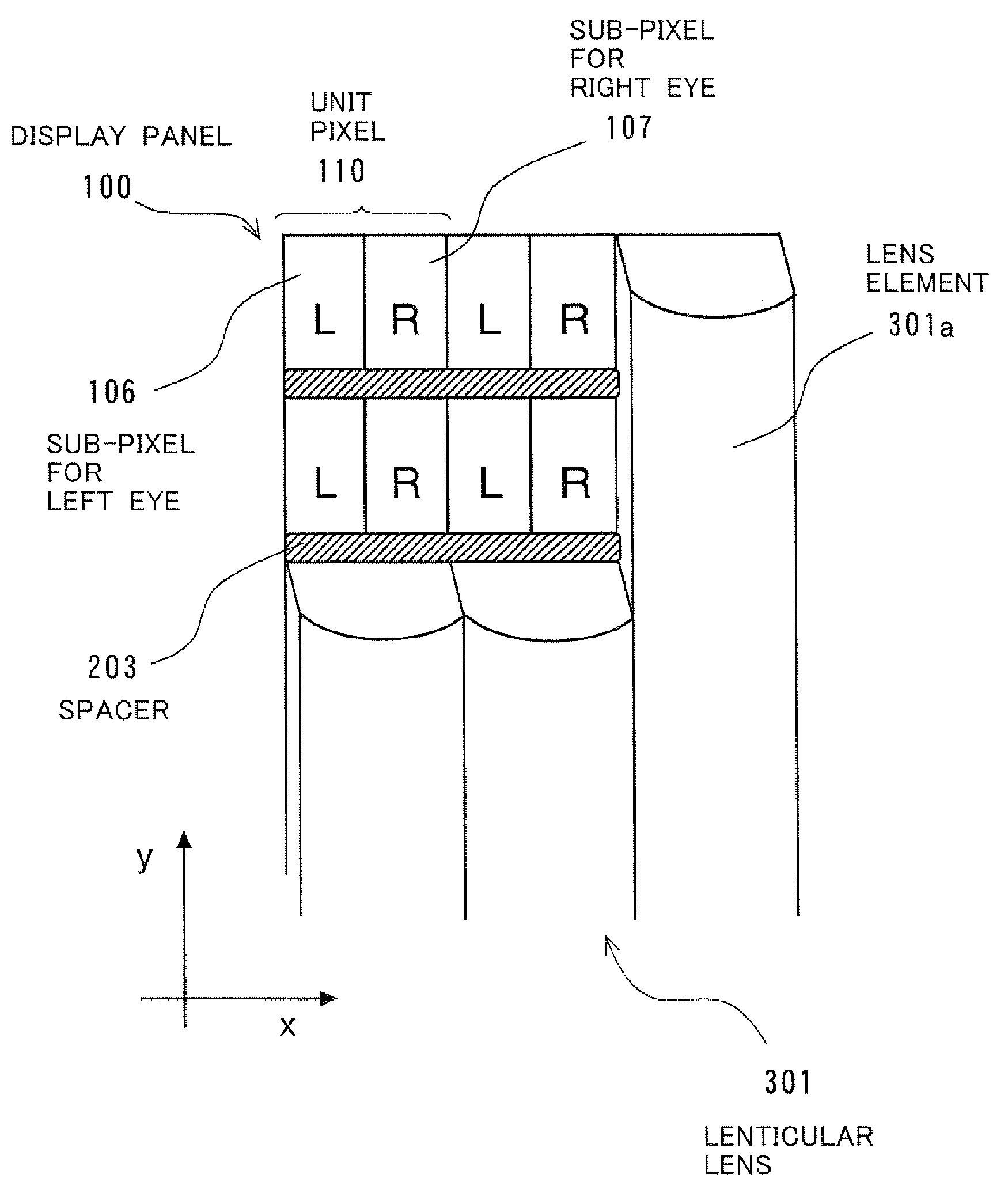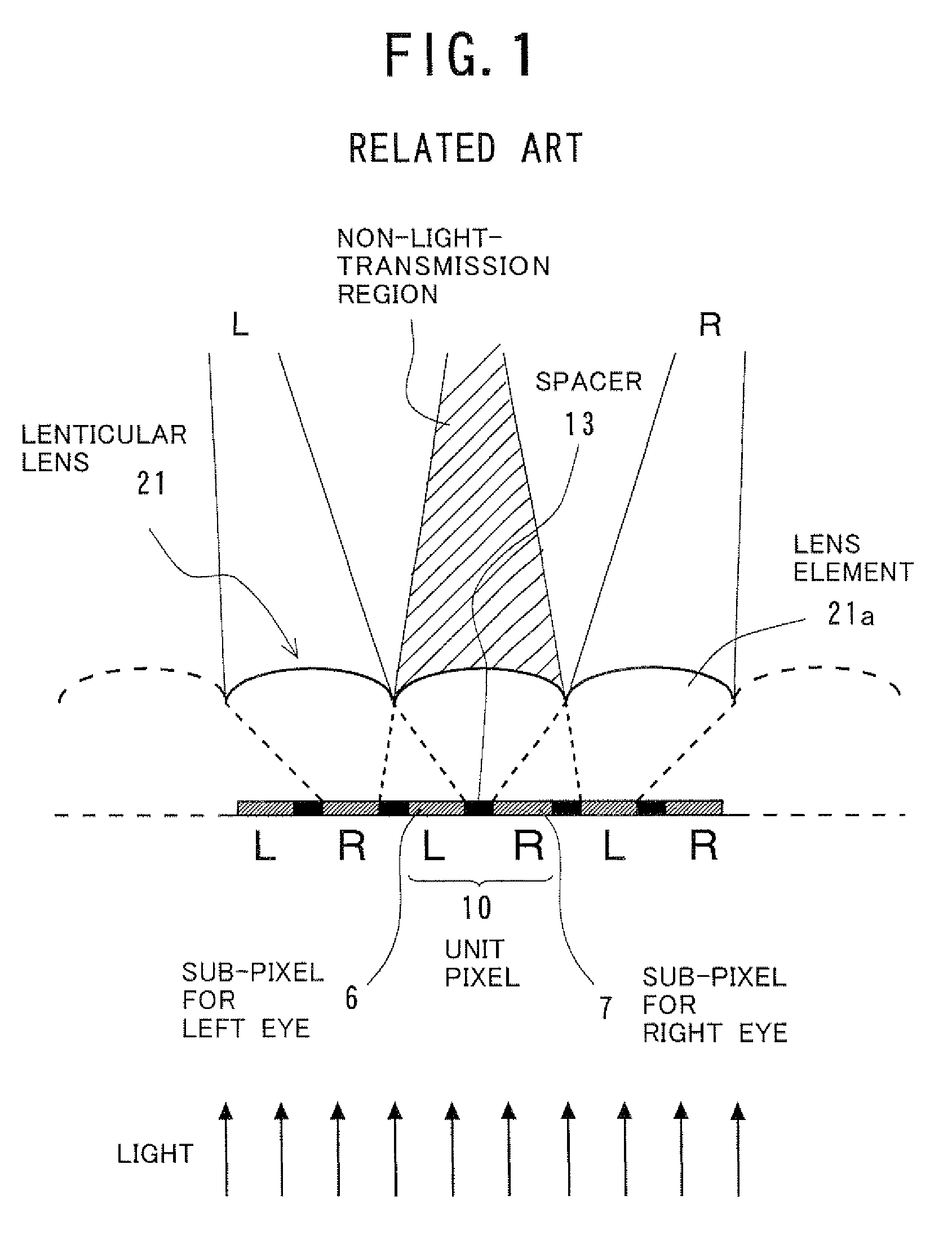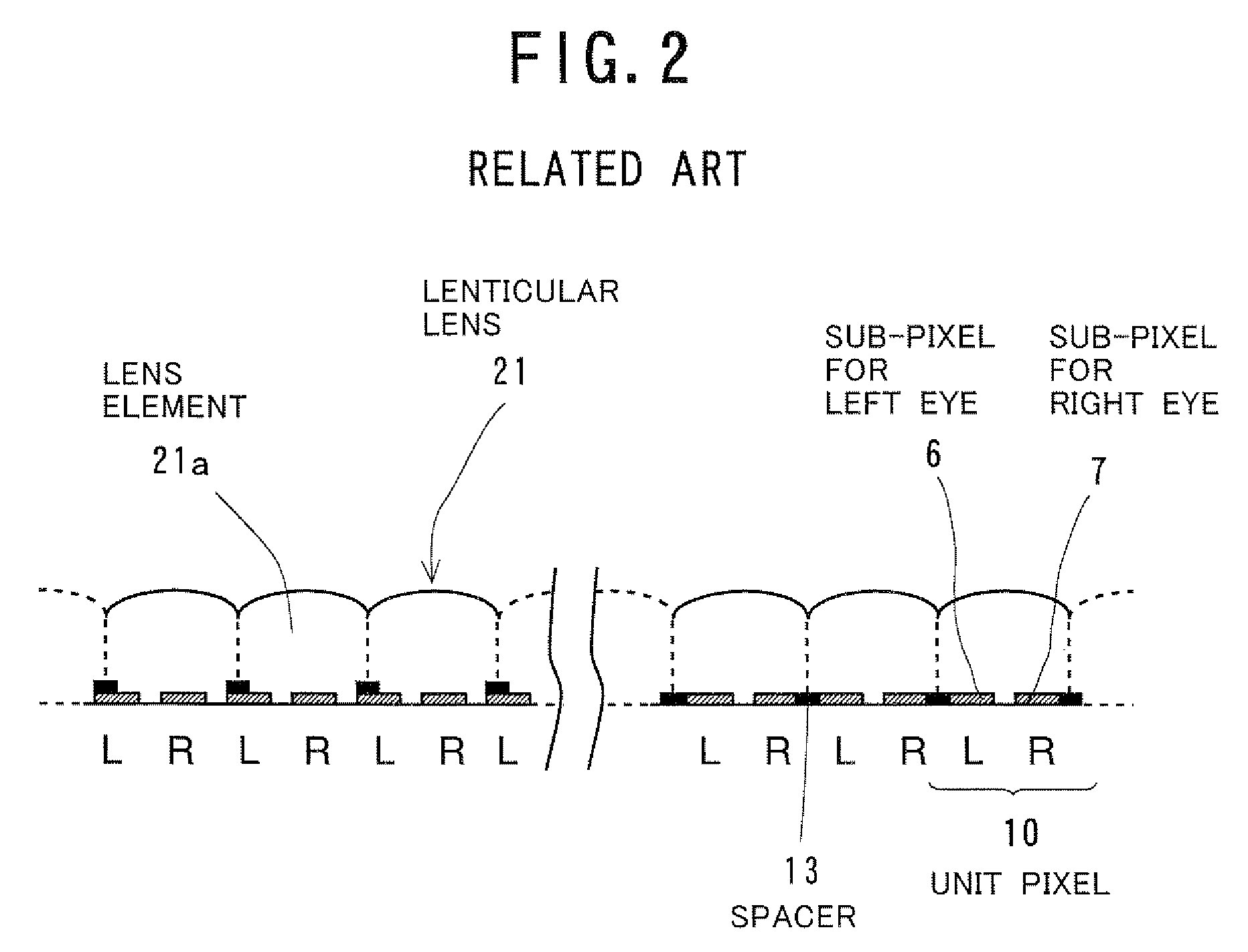Display device and terminal unit using the same
a technology of display device and terminal unit, applied in the direction of optics, instruments, electrical apparatus, etc., can solve the problems of large contrast lowering, uneven gap between the pair of substrates, and high cost, so as to prevent the effect of display quality
- Summary
- Abstract
- Description
- Claims
- Application Information
AI Technical Summary
Benefits of technology
Problems solved by technology
Method used
Image
Examples
first embodiment
[0133]FIGS. 3 to 6 show a display device according to a first embodiment of the present invention.
[0134]As shown in FIG. 6, the display device according to the first embodiment comprises a display panel 100 and a lenticular lens 301.
[0135]The display panel 100, which has a structure of LCD panel, comprises a main substrate 101, an opposite substrate 201 bonded and unified with the main substrate 101 in such a away as to have a predetermined gap therebetween, and a liquid crystal layer 404 injected into the gap between the substrates 101 and 201. The gap between the substrates 101 and 201 (which may be simply termed the “substrate gap”) is kept approximately uniform over the whole surface of the panel 100 by spacers 203 arranged and fixed at predetermined positions between the substrate 101 and 201. Each of the spacers 203 is stripe-shaped.
[0136]As clearly shown in FIG. 4, the main substrate 101 comprises gate lines 103 extending along the horizontal direction of FIG. 4 (i.e., the x ...
second embodiment
[0164]FIGS. 11 and 12 show the pixel structure of the display panel 100A used in a display device according to a second embodiment of the present invention.
[0165]The display panel 100A according to the second embodiment is the same as the display panel 100 according to the aforementioned first embodiment except that the spacers 203, which are extended along the x direction in the form of stripes in the first embodiment, are divided into parts for the respective sub-pixels 106 and 107. In other words, the display panel 100A comprises the discontinuous or isolated spacers 203 in the respective sub-pixels 106 for the left eye and the respective sub-pixels 107 for the right eye, where these isolated spacers 203 are arranged along the x direction at the predetermined intervals. Accordingly, the explanation about the same structural components will be omitted here by attaching the same reference numerals as used in the first embodiment to these components.
[0166]It is apparent that the sam...
third embodiment
[0169]FIG. 14 shows the pixel structure of the display panel used in a display device according to a third embodiment of the present invention. FIGS. 15 to 18 show first to fourth variations of the structure of the display panel of FIG. 14, respectively.
[0170]With the structure of FIG. 14, the display panel comprises the unit pixels 110 each including two isolated spacers 203 and the unit pixels 110 including no spacers. The structure of each unit pixel 110 including the isolated spacers 203 is the same as that used in the aforementioned second embodiment shown in FIGS. 11 and 12. Specifically, one isolated spacer 203 is assigned to the sub-pixel 106 for the left eye of the unit pixel 110 and another isolated spacer 203 is assigned to the sub-pixel 107 for the right eye thereof.
[0171]The unit pixels 110 including the isolated spacers 203 are arranged along one column of the matrix (i.e., the y direction), which constitute the first pixel group. The unit pixels 110 including no space...
PUM
 Login to View More
Login to View More Abstract
Description
Claims
Application Information
 Login to View More
Login to View More - R&D
- Intellectual Property
- Life Sciences
- Materials
- Tech Scout
- Unparalleled Data Quality
- Higher Quality Content
- 60% Fewer Hallucinations
Browse by: Latest US Patents, China's latest patents, Technical Efficacy Thesaurus, Application Domain, Technology Topic, Popular Technical Reports.
© 2025 PatSnap. All rights reserved.Legal|Privacy policy|Modern Slavery Act Transparency Statement|Sitemap|About US| Contact US: help@patsnap.com



